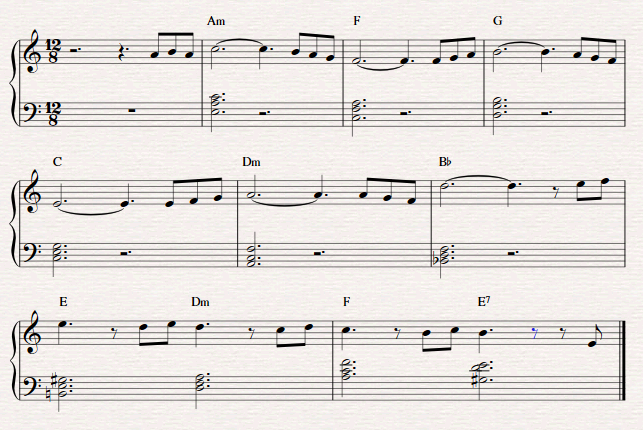OK, let's look at the piece. This is a very simplified version I found online, transposed into A minor (or at least with a starting chord of A minor). But it seens to line up reasonably well with the recording.

(I was expecting something more 'Indian'. This could have been written by Michel Legrand!)
We're in A minor. We rapidly re-focus on C major (but the relative major is barely considered a modulation.) The Dm chord isn't surprising in an A minor/C major environment, and the E7 run back to Am is bog-standard. So it's just the B♭ chord that's a bit of a worry.
Well, it's got two notes in common with the preceding Dm chord. We could explain it as an alternative colour of that chord. What I DON'T think we can usefully do is force it into some sort of 'cycle of 5ths' dominant relationship to the E chord after it.
I take it we're OK with E7 being part of A minor now?

